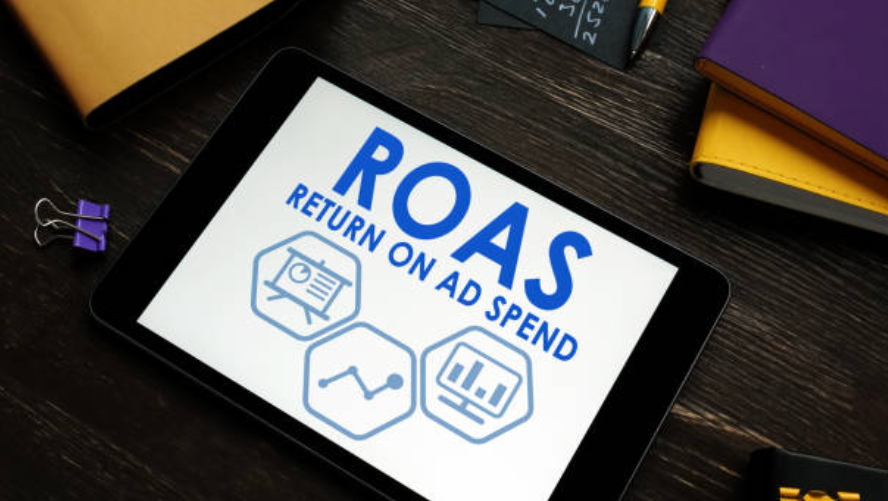Ever wondered how many hours people waste watching cat videos online? Well, let’s turn that wasted time into ROI gold! With around 50% of people guilty of accidentally clicking on ads (we’ve all been there!), it’s time to turn those accidental taps into delightful conversions.
Maximising Return on Ad Spend (ROAS) is the key to success. Meta ads, known for their ability to drive valuable traffic and engagement, hold immense potential for businesses. However, achieving a high ROAS with Meta ads requires a strategic and well-informed approach. As competition grows and consumer behaviour evolves, advertisers must continually adapt their strategies to stay ahead.
Read along as we unlock the secrets of meta ads ROAS and boost your performance marketing like never before!
Table of Contents
Why Ad ROAS Matters for Meta Ads?
Ad ROAS (Return on Advertising Spend) is a critical metric in performance marketing for Meta Ads, ads displayed across various platforms within the Meta ecosystem (formerly Facebook). Meta Ads ROAS measures the revenue generated from advertising relative to the cost of that advertising, providing valuable insights into campaign profitability and efficiency.
Meta Ads ROAS matters because:
- It’s useful for ad agencies to see how well their campaigns perform.
- By analysing ROAS, advertisers can identify which ad campaigns yield higher returns, allowing them to allocate resources more strategically.
- This data-driven approach maximises the impact of ad spend and drives higher revenue.
As Meta Ads encompass a wide range of platforms and formats, measuring ROAS provides a unified metric to evaluate performance across this ecosystem. By continually optimising ROAS, advertisers can enhance ad targeting, creative elements, and bidding strategies, leading to increased ad engagement, conversions, and overall campaign success.
Why you might not be getting the expected outcomes
Several factors could contribute to the issue if you are not achieving the expected outcomes in performance marketing with meta ads. These are:
- Firstly, the targeting and audience selection need to be optimised, leading to ads reaching the wrong audience or attracting irrelevant clicks.
- Secondly, the ad creatives and messaging might not effectively resonate with the target audience, resulting in low engagement and conversion rates.
- Additionally, ad placements, bid strategies, or budget allocation issues can hinder the campaign’s success.
- Moreover, external factors such as seasonality, market fluctuations, or changes in consumer behaviour can influence performance.
Analysing key performance indicators, such as Return on Advertising Spend (ROAS), and continuously optimising strategies based on data-driven insights are essential to overcome these challenges and improve campaign effectiveness. Regular A/B testing, refining audience segments, and staying updated on industry trends can also positively impact performance marketing outcomes with meta ads.
Seven ways to improve meta ads ROAS
Achieving a high ROAS with Meta ads requires a strategic approach and a thorough comprehension of the platform’s dynamics. With increased competition and algorithmic complexities, creating an advertisement simply and hoping for the best may not be sufficient. This guide provides actionable insights and best practices tailored specifically to Meta ads.
By implementing these strategies, businesses can optimise their campaigns, improve their advertising performance, and generate higher returns on their advertising investments.
Now, let’s delve into the seven crucial stages that will pave the way to an improved Meta ads ROAS, guiding you through implementing each method to generate measurable and quantifiable outcomes.
Choosing the right campaign strategy for Meta Ads
Effective performance marketing begins with selecting the appropriate campaign strategy tailored to your goals. For instance, a brand like “TechGadgets” might opt for a conversion-focused strategy to drive direct sales, while “FashionHub” may choose a traffic campaign to increase website visits.
Example: A mobile gaming company could run a performance-based Meta Ad campaign to target users interested in similar games. Using in-app actions as a key performance indicator (KPI), they can optimise their ROAS by focusing on users likelier to download and engage with their game.
Creating Effective Thumb Stopper Creatives
Engaging and visually appealing thumb-stopper creatives are vital in capturing users’ attention on platforms like Meta. Brands like “FoodieDelights” can use mouth-watering images of their dishes, or “TravelExplorers’ may showcase breathtaking travel destinations to stop users from scrolling past. The ad’s creative design, such as vibrant colours, snappy animations, and clear call-to-action (CTA) overlays, would entice users to click through and make a purchase, thereby improving ROAS.
Crafting Compelling Ad Copy for Meta Ads
Powerful ad copy is vital to driving action and attracting the right audience. For instance, “FitnessGuru” can use persuasive language to promote their workout program’s benefits, while “HomeDecorMasters” may use compelling offers to entice customers to upgrade their home decor.
Example: An online fitness platform running a Meta Ad campaign might use ad copy like “Get Fit Today – 7-Day Free Trial!” The document emphasises the immediate benefit of getting fit and the inducement of a free trial, incentivising users to click through and test the platform, thereby increasing ROAS.
Optimising Landing Pages for Higher Conversion Rates
By providing seamless user experiences and clear call-to-actions, you can optimise your landing page to improve ROAS. For instance, “PetLoversParadise” can ensure a user-friendly checkout process, while “TechWizards” might simplify their product pages for faster decision-making.
Example: A subscription-based meal kit delivery service running a Meta Ad campaign could ensure that the landing page highlights their various meal plans, offers a simple signup process, and prominently displays testimonials from satisfied customers.
Implementing Audience Targeting Strategies to Maximise ROAS
Effective audience targeting ensures your ads reach the right people. Brands like “BeautyEssentials” can use demographics to target specific age groups, or “OutdoorAdventures” may use interests to connect with hikers and nature enthusiasts.
Example: An outdoor gear retailer could use audience targeting to reach individuals who have previously engaged with outdoor-related content on Meta’s platform or have shown interest in camping and hiking.
Utilising A/B Testing and Experimentation to Improve Meta Ad Performance
Continuously experimenting with different ad helps optimise performance. For instance, “GamingHeaven” can test other CTA buttons, while “HomeFit” might experiment with various video lengths to find the most effective format.
Example: A fashion brand running a Meta Ad campaign might A/B test two ad creatives – one featuring models in outdoor settings and another with a studio background. By analysing the performance metrics, they can determine which creative performs better, leading to increased ROAS through optimised ad delivery.
Monitoring and Analysing Ad Campaign Data for Continuous Optimisation
Regularly analysing ad campaign data allows brands like “ArtisanCoffee” to identify areas of improvement and allocate budgets more efficiently. “BookwormEmporium” can optimise ad placements and budgets for better ROAS by monitoring metrics like click-through and conversion rates.
Example: An online education platform running a Meta Ad campaign might observe that its CTR is high, but the conversion rate on the landing page is low. By analysing this data, they can pinpoint potential issues with the landing page and make necessary adjustments to increase the overall ROAS of their ad campaigns.
Conclusion
Enhancing Meta Ads ROAS through performance marketing requires a multifaceted approach. By strategically selecting campaign strategies, creating attention-grabbing creatives, and crafting compelling ad copy, brands can capture their target audience’s interest. Continuously monitoring and analysing data enables data-driven decision-making for ongoing optimisation. By following these strategies, brands can unlock the true potential of Meta Ads and achieve higher ROAS, maximising their return on investment.



